Restoration Order from the U.S. : Removal of Stains on A Hanging Scroll
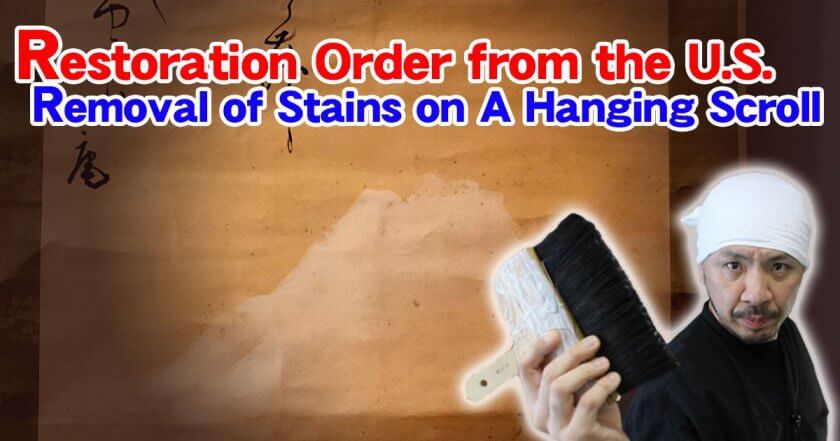
Restoration Order from the U.S. : Removal of Stains on A Hanging Scroll
Contents
- 1 Restoration Order from the U.S. : Removal of Stains on A Hanging Scroll
- 2 Removal of the Old Backing Paper/Old Urauchi Paper
- 3 Cleaning
- 4 Removal of Stains
- 5 The First Backing/Hada-Urauchi
- 6 Tsukemawashi / Cut and Join
- 7 Mimi-Ori / Folding Over the Edge
- 8 Finishing
- 9 Completion
- 10 Video : Restoration Order from the U.S. : Removal of Stains on A Hanging Scroll
Restoration Order from the U.S. : Removal of Stains on A Hanging Scroll
We have been frequently consulted about the solution of an unfortunate occurrence of stains among all restoration consultations for kakejiku – hanging scroll and this time, we received a stain removal request from the U.S.
The kakejiku below is the one requiring a stain removal.
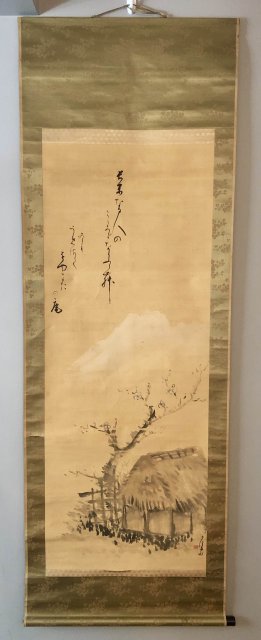
Restoration Order from the U.S. : Removal of Stains on A Hanging Scroll
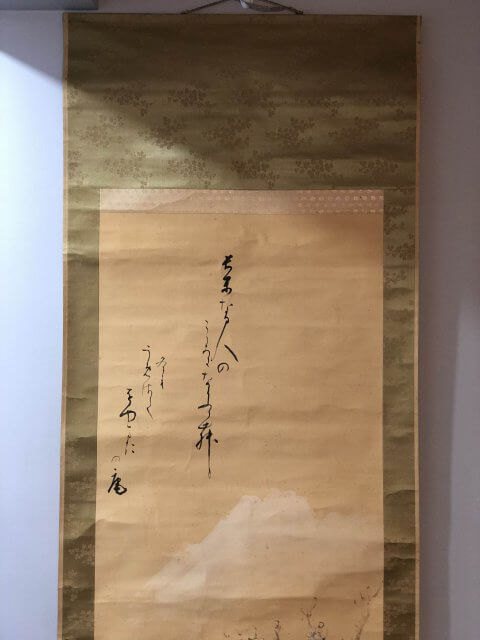
Restoration Order from the U.S. : Removal of Stains on A Hanging Scroll
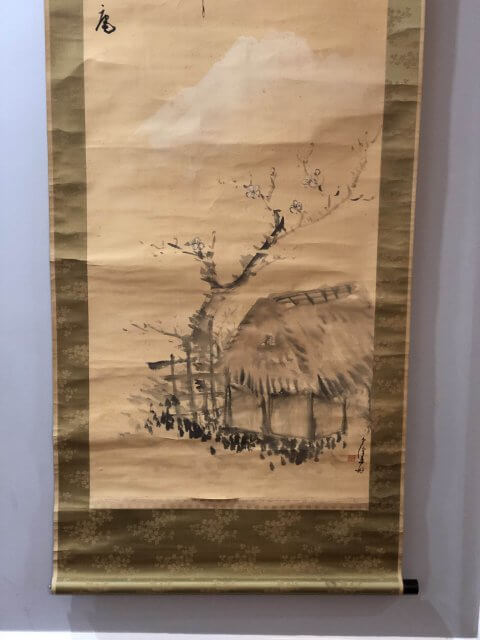
Restoration Order from the U.S. : Removal of Stains on A Hanging Scroll
The color of this artwork which is depicting Mt. Fuji and a plum tree has turned brownish and utterly held back the white color of the snow on the Mt. Fuji.
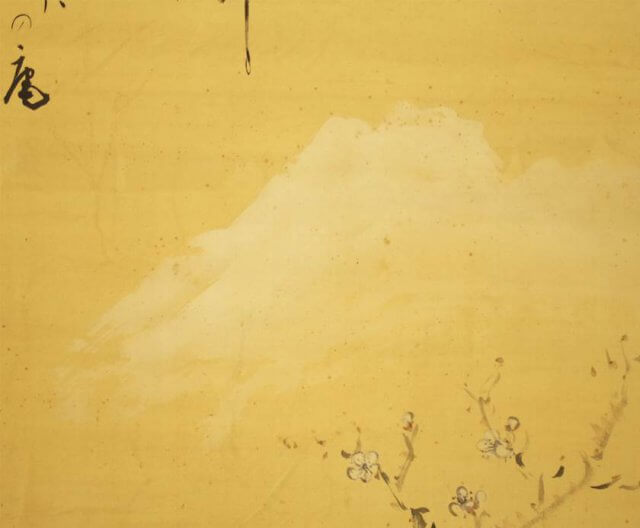
Moreover, an appearance of tiny dots of stain has been such distraction when appreciating the work.
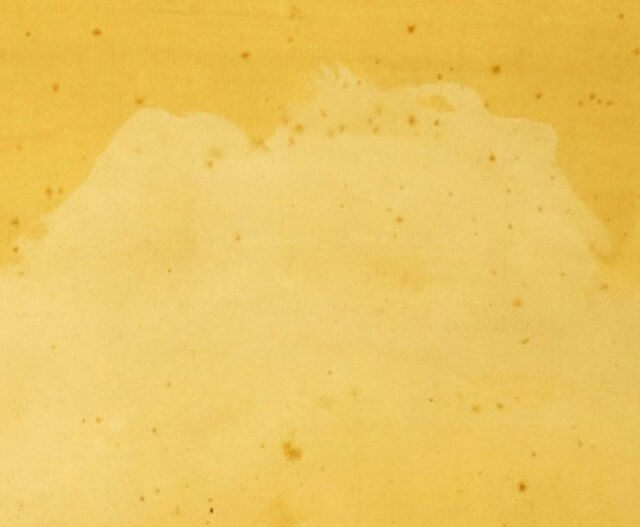
The requesting client was apparently very much keen on the work and passionately insisted that
‘Removal of these stains and dirt surely let the Mt. Fuji and plum tree stand out!!’
The client also kindly accepted that the removal will be carried out as far as we could avoid risks as an excessive removal could cause other unwanted flaws.
This time, we introduce the step by step procedure of the restoration work on this particular kakejiku.
Removal of the Old Backing Paper/Old Urauchi Paper
Backing paper of kakejiku are meant to be removed to proceed a stain removal.
Peeling the pasted backing paper after soften them with water.
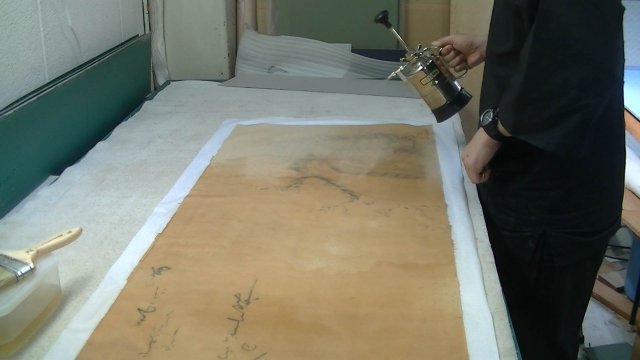
Around 3 or 4 layers of backing paper are attached to a kakejiku so peel them one by one with care.
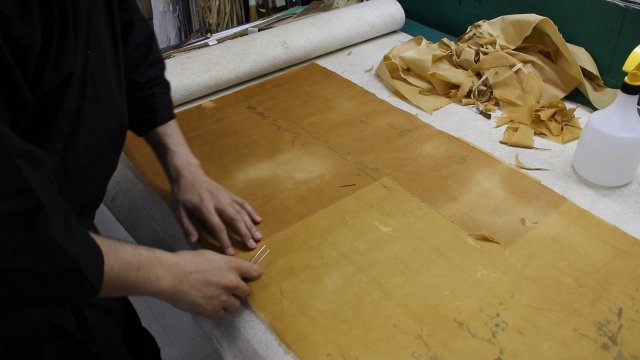
Occasionally, the paper is pasted too strong to peel still if they were forcefully peeled, the artwork itself could also come along with and be ripped so the process must be made delicately by peeling them just little by little cautiously.
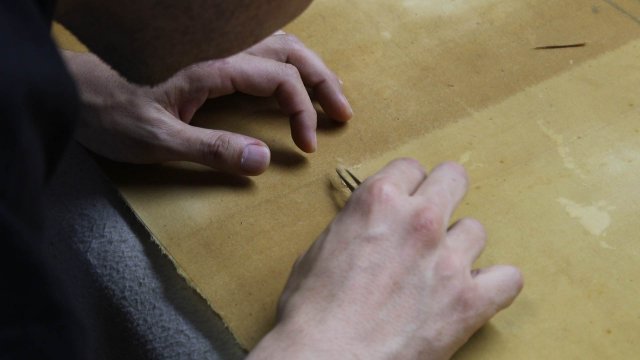
Cleaning
After the old backing paper removal, the artwork is cleansed with a specialized cleaning solution.

Once the solution is sprayed all over the artwork, it will be spread with a brush. The artwork is left for 10 – 20 minutes to degrade the component of the dirt.
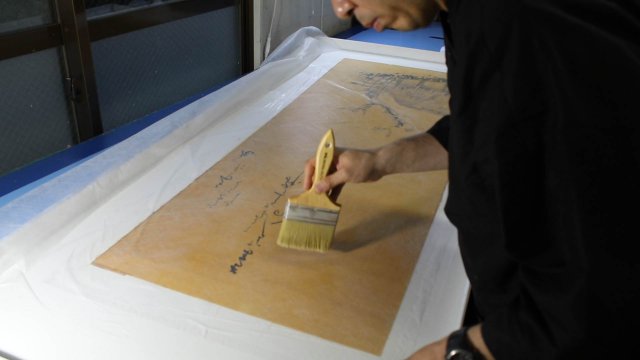
The dirt has been visibly degraded. This process is repeated 2 – 3 times.
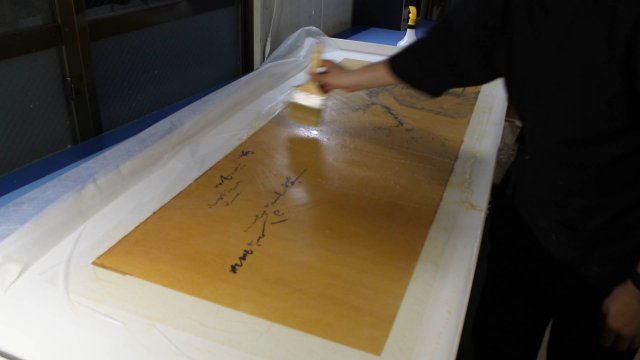
Once the cleaning process is completed, the cleaning solution will be thoroughly washed out with water.
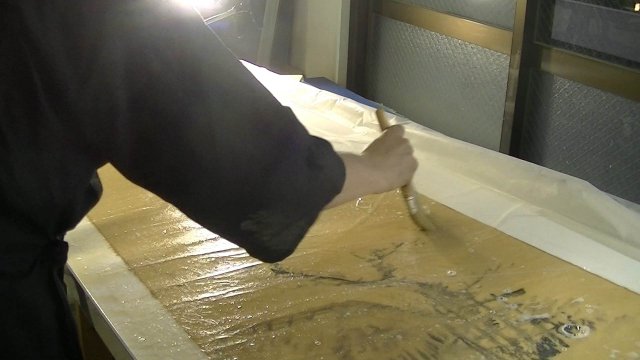
Removal of Stains
After the cleaning is done, we apply a stain removing solution on the artwork. Like we use a washing powder and stain remover for garment for different purposes we use different type of solution for cleaning and removing stains. This stain removal takes 30 minutes to an hour watching the state and adjusting the dilution rate of the solution.
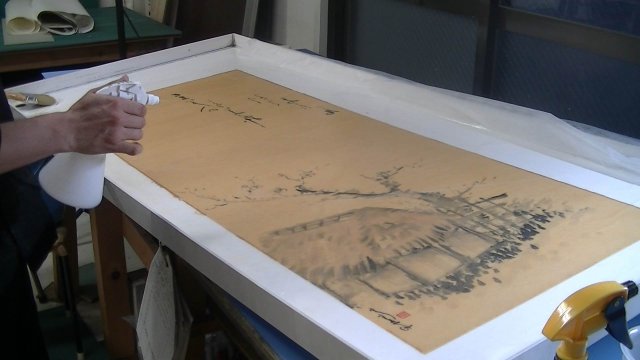
The First Backing/Hada-Urauchi
After the cleaning and stain removal processes are completed, a sheet of Japanese paper will be affixed directly onto the backside of the artwork that is called hada-urauchi (the first backing).
Firstly, the wrinkles on the artwork are perfectly smoothed out by being dampen. Despite how it seems, this is the trickiest task among all backing processes. A forceful stretch against parts that are hardly stretched could damage the piece of work therefore we smooth them out with care allowing ourselves enough time.
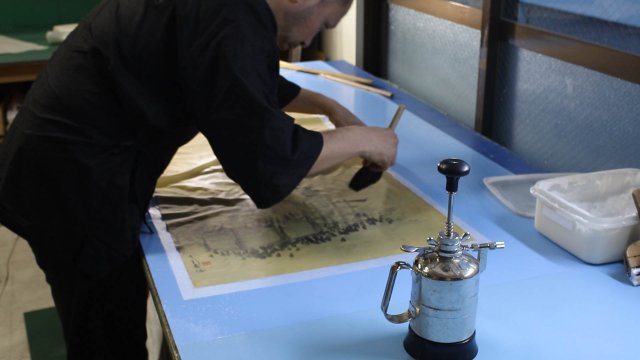
Once these wrinkles on the artwork are smoothed out, we spread paste on the Japanese paper used for backing. Thickness of the paste is adjusted based on the condition of the artwork.
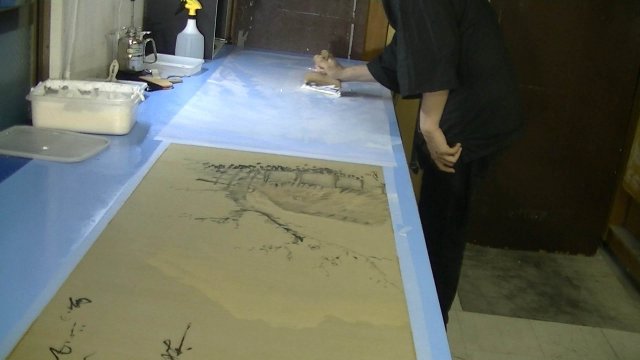
For minimizing amount of the paste, getting rid of the paste in excess with a brush.
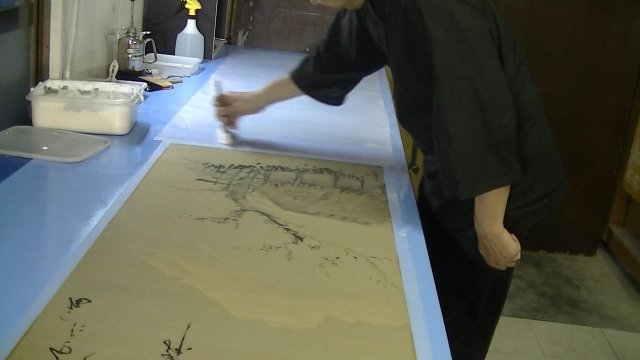
Then it’s time to work on the backing. Adhere the paper onto the artwork stroking little by little with a brush to avoid wrinkling the backing paper.
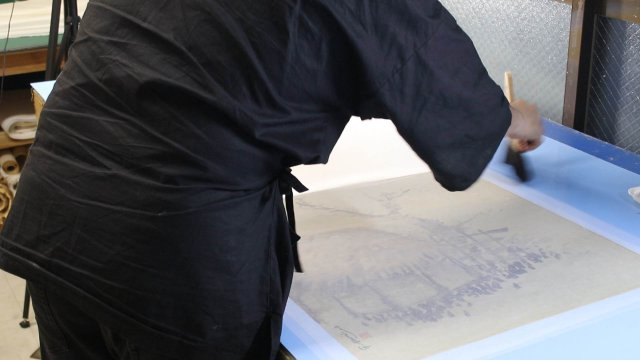
Once the backing paper is pasted to the artwork, we carry on nadekomi, a process of pushing out small air bubbles stuck between the work and backing paper with a brush and this process strengthens the adherence between the work and the paper.
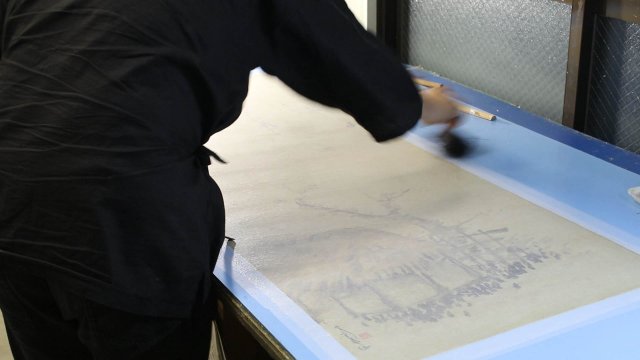
The brush stroking process is followed by a brush tapping process on the flipside of artwork and with this method, the adherence is improved as fibers of the Japanese paper tangle up with the artwork.
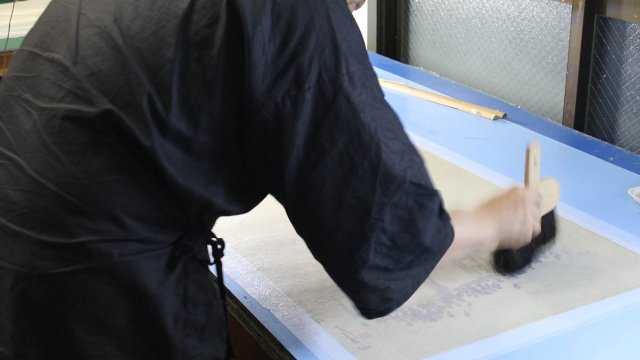
After the backing work is done, the artwork is temporarily placed on a karibari board to dry. This process is called ‘karibari’.
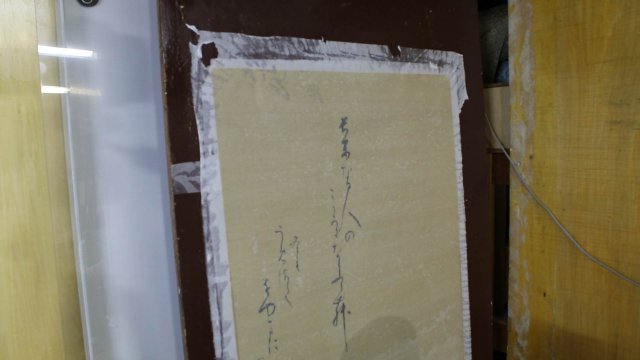
Tsukemawashi / Cut and Join
After the process of hada-urauchi and cutting around the artwork, we move on to the next process which is to attach fabric to the artwork called ‘tsukemawashi’.
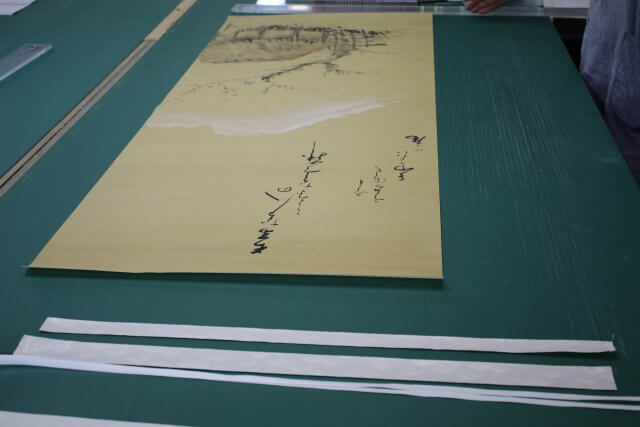
Kakejiku is often misunderstood that its artwork is directly pasted on a large fabric but in reality, the artwork is attached with small parts of fabric with 3mm width paste area.
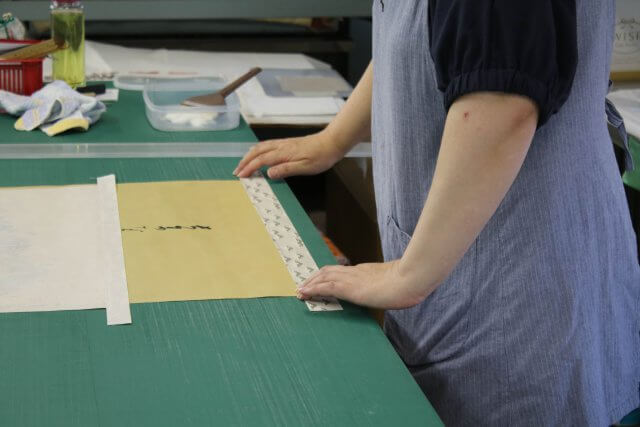
Although too much paste causes a mess by oozing out of a pasted area, too little paste won’t work properly. For that reason, knowing the right amount of paste is important and that is something we have to accustom ourselves to.
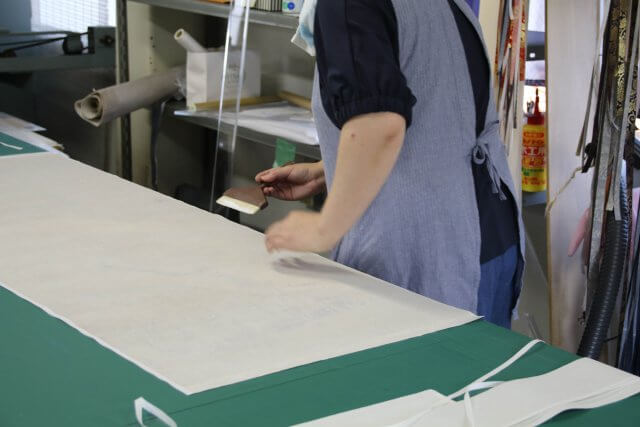
This time, we will arrange the part to show 1.5mm white line around the artwork. Making 3mm paste areas at the both side of 7.5mm line to show the rest of 1.5mm part when looking at the front is surely a meticulous task.
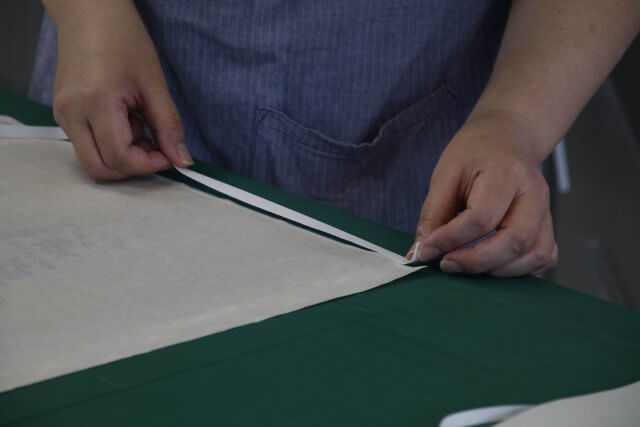
Cutting fabric means producing threads of the fabric and fuzz so keep them down with paste.
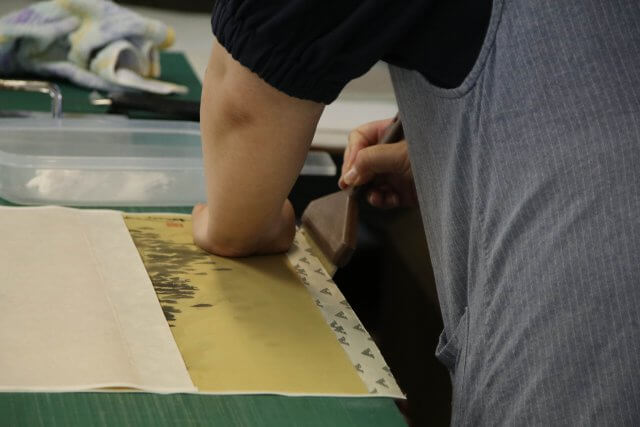
The client chose the fabric below this time. He was having a tough time to choose the right one but ended up with this fabric feeling as if its white and silver peony pattern woven on the pale blue background is enhancing the white color of the Mt.Fuji in the artwork. Affixing the fabric for the pillar while making 1.5mm white line to show.
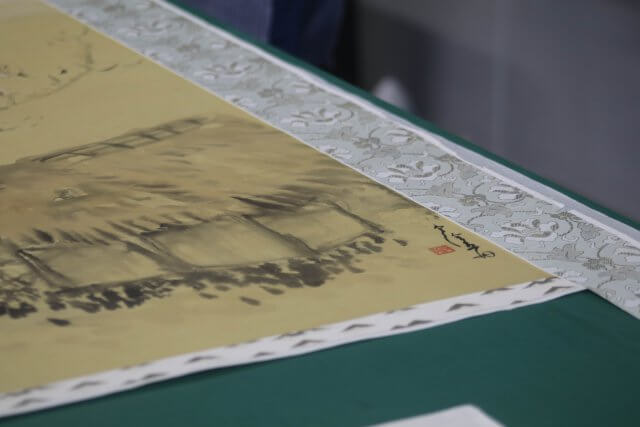
Affixing the fabric at the top and bottom of the artwork. The white line has been beautifully made.
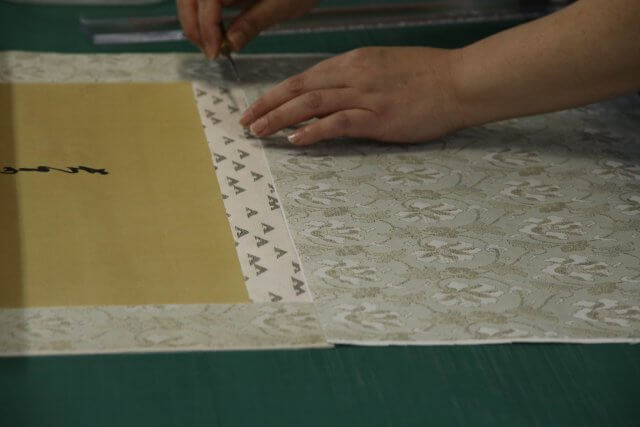
Tsukemawashi is completed.
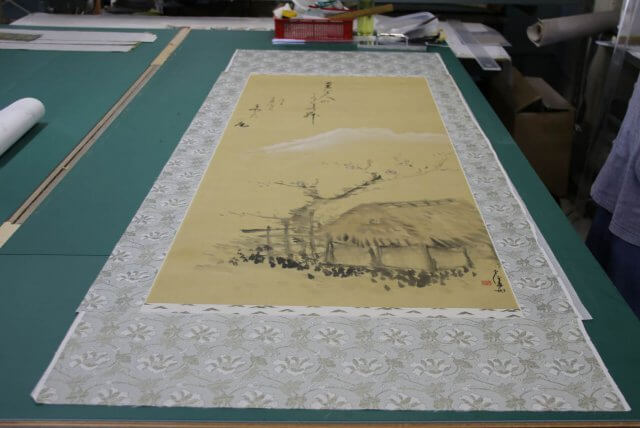
Mimi-Ori / Folding Over the Edge
For protecting the artwork approximately 3mm width of fabric at the right and left edges is fold back and that is called mimi-ori / folding over the edge. Once finished with tsukemawashi and naka–urauchi /the second backing, extra fabric is cut according to the finished size of the kakejiku keeping the part of mimi–ori.
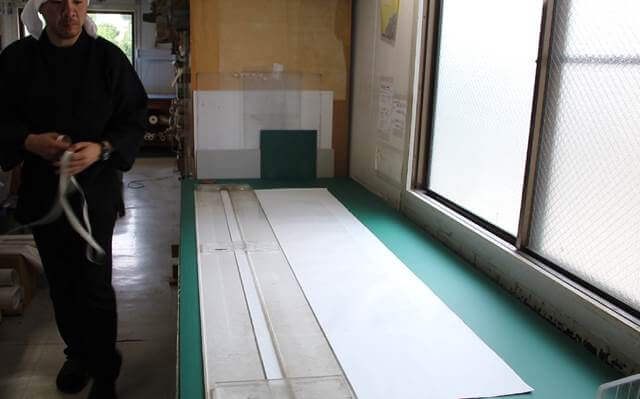
A part marked with this red circle is the fold for mimi-ori process.
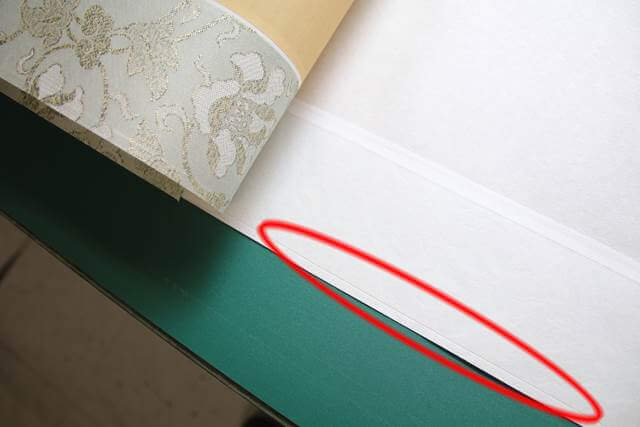
Folding back the both edges along the fold.
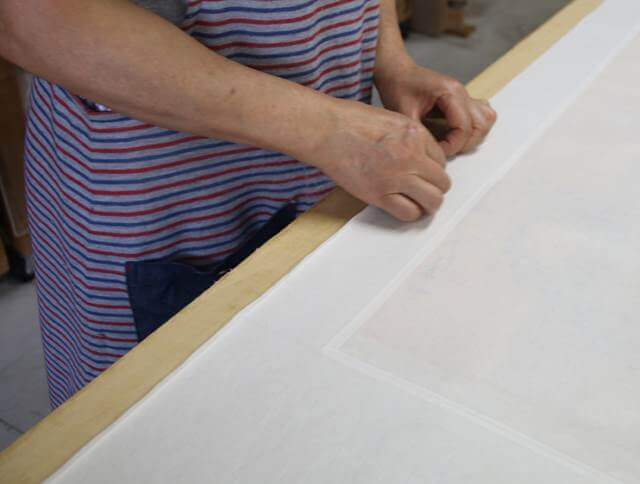
Applying paste on the folded part and after firmly sticking both side of it, mimi-ori is all done.
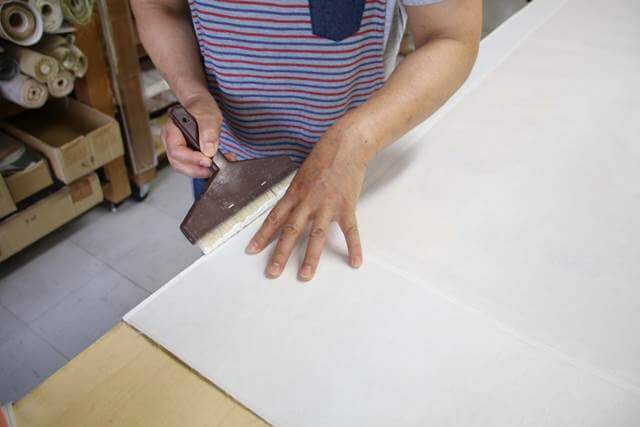
Repeat it for the other side.
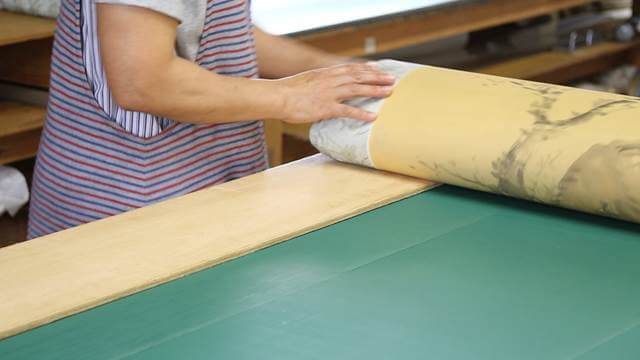
Finishing
Once mimi-ori is done, we take the final step called finishing, implementing sō-urauchi the third backing. Attaching a semilunar-shaped wooden rod called hassō at the top part of kakejiku.
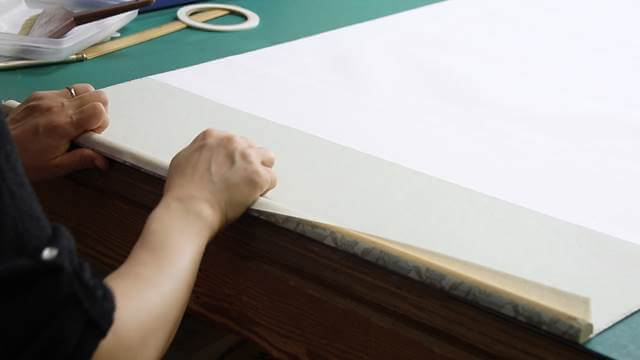
Fitting ‘kakeo’cord which is for hanging a kakejiku as well as ‘makio’ cord used for wrapping up a kakejiku.
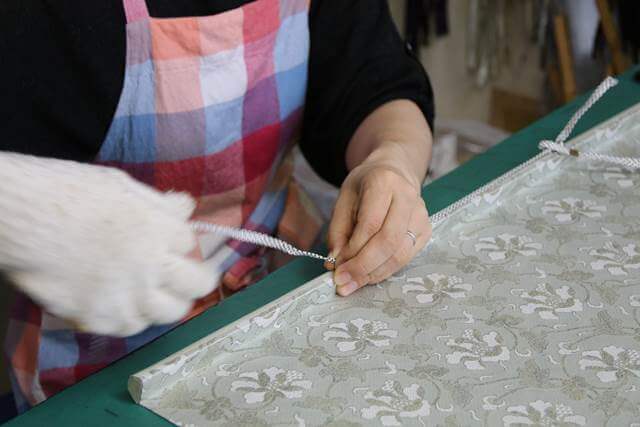
And next, we execute the ‘finishing’ for the bottom part of kakejiku. Attaching a roller rod with knobs to the bottom part and it completes all the process.
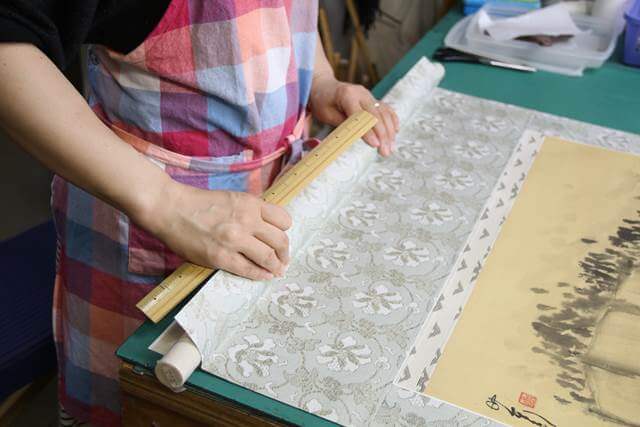
After this, the final inspection will follow then at last, the procedure will be completed.
Completion
Having gone through the time consuming process, the restoration of the kakejiku has been brought to completion.
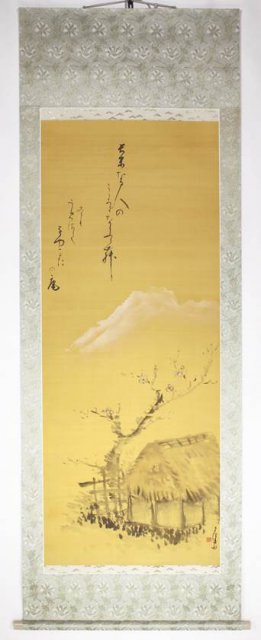
Avoiding a whitening effect on the artwork, the dirt and stains have been removed. The restoration process was completed without disturbing the history behind the artwork.
I feel that whitening the artwork would offend its dignity. Likewise, having the delicate sense of balance places great importance on any restoration work.
We believe that having this sense is absolutely essential and carry on cleaning and stain removal while minimizing whitening to save the tastefulness of old artworks.
The fabric chosen by the client, as he mentioned, enhances the Mt. Fuji and the plum tree and creates a sense of unity on the whole image when one admires the kakejiku.
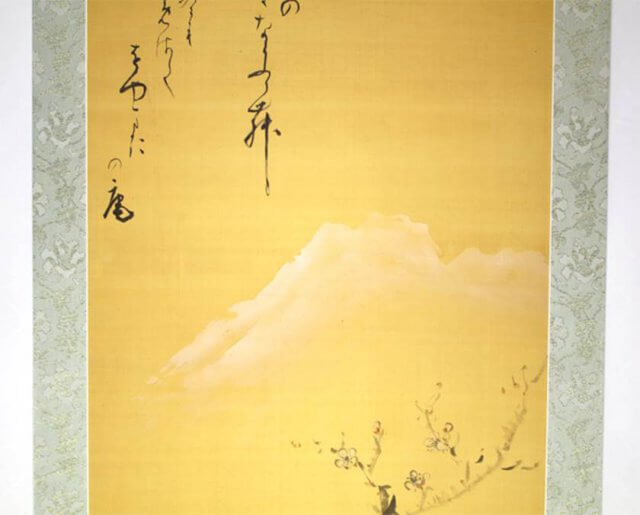
We hope the client will display his beautifully reborn kakejiku at his home in the U.S. admiring it with delight.
We take requests for dirt and stains removal on kakejiku like this time therefore, please do not hesitate to contact us if you have these inquiries.
Video : Restoration Order from the U.S. : Removal of Stains on A Hanging Scroll

